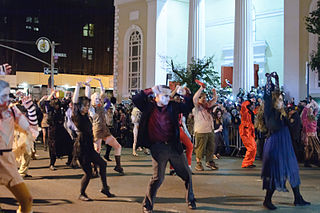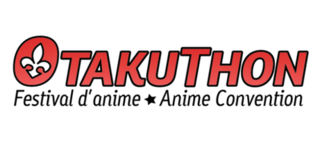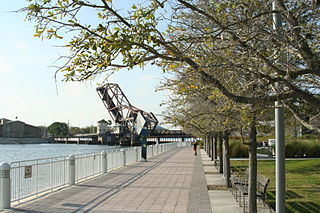
Tampa is a city on the Gulf Coast of the U.S. state of Florida. The city's borders include the north shore of Tampa Bay and the east shore of Old Tampa Bay. Tampa is the largest city in the Tampa Bay area and the county seat of Hillsborough County. With an estimated population of 403,364 in 2023, Tampa is the 49th-most populous city in the country and the third-most populous city in Florida after Jacksonville and Miami.

A krewe is a social organization that stages parades and/or balls for the Carnival season. The term is best known for its association with Mardi Gras celebrations in New Orleans, but is also used in other Carnival celebrations throughout Louisiana and along the Gulf of Mexico, such as the Gasparilla Pirate Festival in Tampa, Florida, Springtime Tallahassee, and Krewe of Amalee in DeLand, Florida with the Mardi Gras on Mainstreet Parade as well as in La Crosse, Wisconsin and at the Saint Paul Winter Carnival.

Ybor City is a historic neighborhood just northeast of downtown Tampa, Florida, United States. It was founded in the 1880s by Vicente Martinez-Ybor and other cigar manufacturers and populated by thousands of immigrants, mainly from Cuba, Spain, and Italy. For the next 50 years, workers in Ybor City's cigar factories rolled hundreds of millions of cigars annually.

The Gasparilla Pirate Festival is a large parade and a host of related community events held in Tampa, Florida, United States, most years since 1904. The centerpiece of the festivities is the Parade of Pirates, which is framed as a friendly invasion by the crew of the mythical pirate José Gaspar, a popular figure in Florida folklore. The Parade of Pirates is often referred to as the Gasparilla Parade by locals, and the date of the event is known as Gasparilla Day.

Channel District is a residential neighborhood in the City of Tampa that includes an entertainment complex, just east of Downtown Tampa, Florida. It is bordered by Ybor Channel on the east and Garrison Channel on the south. Channelside is a nickname for the entertainment complex Channelside Bay Plaza, within the neighborhood that includes shops, restaurants, and bars. It is located next to the Florida Aquarium, American Victory Museum, Port Tampa Bay and a short stretch on the Tampa Riverwalk to the Tampa Bay History Center. Also located in the district is the Amalie Arena where the NHL's Tampa Bay Lightning play their home games. The Arena also hosts concerts and other events. The center of the Bay Plaza has a large open court for live music, with views of the downtown skyline, cruise ships and the Port of Tampa. It also houses a Sony Giant Screen theater. The TECO Streetcar has several stops in the district. Also, NEVs are being utilized by startups to link Tampa's core neighborhoods including Channelside. The Tampa Convention Center is located adjacent to the district to the west.

A costume party or fancy dress party is a type of party, common in contemporary Western culture, in which many of the guests are dressed in costume, usually depicting a fictional or stock character, or historical figure. Such parties are popular in the United States, United Kingdom, Canada, Australia, Ireland and New Zealand, especially during Halloween.

Fantasy Fest is a street party held annually in the last week of October in Key West, Florida.

The Village Halloween Parade is an annual holiday parade held on the night of Halloween, in the Greenwich Village neighborhood of New York City. The parade, initiated on October 31, 1974 by Greenwich Village puppeteer and mask maker Ralph Lee, is the world's largest Halloween parade and the only major nighttime parade in the United States. The parade reports itself to have 50,000 "costumed participants" and 2 million spectators. The parade has its roots in New York's queer community.
Tampa Heights is one of the oldest neighborhoods within the city limits of Tampa, situated in the central part of the city. As of the 2000 census, the neighborhood had a population of 16,393.

West Tampa is one of the oldest neighborhoods within the city limits of Tampa, Florida, United States. It was an independently incorporated city from 1895 until 1925, when it was annexed by Tampa.
The modern history of Tampa, Florida, can be traced to the founding of Fort Brooke at the mouth of the Hillsborough River in today's downtown in 1824, soon after the United States had taken possession of Florida from Spain. The outpost brought a small population of civilians to the area, and the town of Tampa was first incorporated in 1855.

The Exotic Erotic Ball was held annually from 1979 to 2009 on a weekend, usually before Halloween night, in the San Francisco Bay Area, California and was a public, adult-themed event. Over three decades, the annual indoor event was attended by nearly half a million people since its inception with steadily increasing growth in attendance each year until 2010, when the event was cancelled due to poor ticket sales and cost overruns. The 2011 ball was never planned. Due to the worldwide popularity of the event the City of San Francisco issued three proclamations for “Exotic Erotic Ball Day,” twice by Mayor Willie Brown in 1999 and again in 2001, and once by Mayor Gavin Newsom in 2004.

Otakuthon is a Canadian anime convention promoting Japanese animation (anime), Japanese graphic novels (manga), related gaming and Japanese pop-culture. It is held annually for 3 days in downtown Montreal during a weekend in August. It is a non-profit, fan-run anime convention that was initiated by Concordia University's anime club, named Otaku Anime of Concordia University. The name "Otakuthon" is a portmanteau of the Japanese word "otaku" and "marathon". Otakuthon strives to be a bilingual event, having programming, the masquerade and the program book in both official languages. The first edition of Otakuthon was held in 2006 in mid-June, but later moved to early-mid August / late July from 2007 onward. The current edition, Otakuthon 2024, is being held on August 2-4, 2024 at the Palais des congrès de Montréal.
The Artists and Writers Ball was founded in the late-1970s in Tampa, FL by Bud Lee (photographer), Peggy Lee, David Audet, Paul Wilborn, Jeff Dunlap, Beverly Coe, Bebe Williams, Mary D. Scourtes and Charley Greacen as an alternative to the exclusive Gasparilla Pirate Festival krewes and parade.

Ybor City is a historic neighborhood that includes the Ybor City Historic District in Tampa, Florida. It is located just northeast of downtown Tampa and north of Port Tampa Bay. The neighborhood has distinct architectural, culinary, cultural, and historical legacy that reflects its multi-ethnic composition. It was unique in the American South as a prosperous manufacturing community built and populated almost entirely by immigrants.

The State Street Halloween Party was an annual Halloween festival located in Madison, Wisconsin.

The Big Guava is a nickname for Tampa, Florida, United States. It was coined in the 1970s by Steve Otto, long-time newspaper columnist for the Tampa Tribune and Tampa Times.

The Tampa Riverwalk is a 2.6-mile-long (4.2 km) open space and pedestrian trail along the Hillsborough River in Tampa, Florida. The Riverwalk extends along most of the downtown Tampa waterfront from the Channelside District on the eastern terminus to the mouth of the Hillsborough River and then north along the riverside to Tampa Heights, forming a continuous path that connects a multitude of parks, attractions, public spaces, and hotels. Among the notable points of interest along the Riverwalk are the Tampa Bay History Center, Amalie Arena, the Tampa Convention Center, Rivergate Tower, Curtis Hixon Waterfront Park, Water Works Park, and the Waterfront Arts District which includes the Tampa Museum of Art, Florida Museum of Photographic Arts, Glazer Children's Museum, and the Straz Center for the Performing Arts. Locations along the Riverwalk play host to many community events, most notably the numerous festivals held at Curtis Hixon Park and the arrival of the "pirate ship" Jose Gasparilla, which moors at the Riverwalk behind the Convention Center during the Gasparilla Pirate Festival.

The Robert W. Saunders Sr. Public Library is a member of the Tampa-Hillsborough County Public Library System (THPL) and the Hillsborough County Public Library Cooperative (HCPLC).
















